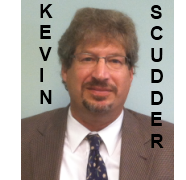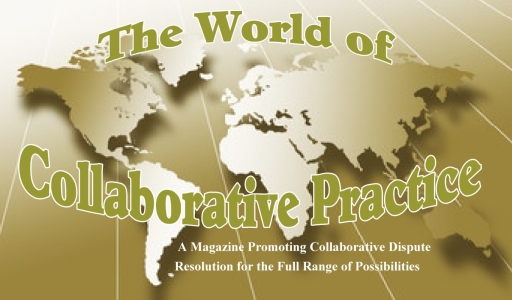
Tags
Related Posts
Share This
GOING HOME – 2 of 3: INTER-PRACTICE GROUP RELATIONS
What makes for effective Collaborative Practice? The author shares thoughts gleaned from a personal journey. [part 1 is here]
Good Practice Group health is essential to the health of Collaborative Practice as a whole.
Most of the energy that we put into our practice group work involves intra-Practice Group relations. “Intra” denotes “inside” or “internal”. Intra-Practice Group relations describes everything we do individually within each of our practice groups, from attending meetings, studying Collaborative literature, attending trainings, networking, public speaking, making presentations, and developing relationships with other collaborative professionals.
The importance of intra-practice group relations cannot be overstated. Through this work we grow individually as Collaborative Practitioners. As a committed group of individuals joined together by our practice group structure we build our local Collaborative Communities. We network. We educate the public, the legal community, others, and ourselves. We become larger than ourselves as individuals.
We miss an opportunity, however, if we stop there with our practice group work.
While “intra-“ refers to within and internal, “inter-“ refers to “between”. Inter-practice group work refers to relations between practice groups. This can mean both relations between local practice groups and / or relations between practice groups in different states and countries.
While intra-practice group relations are part of the current Collaborative discussion, inter-practice group relations are often overlooked.
Some of us belong to more than one practice group including one or two “local” groups, a larger “county” or regional group, a statewide practice group, and IACP, the international group. Each practice group has a different purpose and a different meeting schedule.
For example:
I am a member of three small practice groups: Cypress Collaborative Divorce (1x / week), Cascadia Collaborative Alliance (1x / month), and Compass Collaborative (1x / month).
On a county-wide / regional level I belong to King County Collaborative Law (KCCL) (annual meeting).
On a state-wide level I belong to Collaborative Professionals of Washington (CPW) (annual 2.5 day training).
Internationally I belong to the International Academy of Collaborative Professionals (IACP) (committee work and Forum).
The local practice groups of which I am a member have many similarities. We come from a small geographic area in a “blue” state. We value recycling, bike lanes, ferry rides and the outdoors. We laugh about the rain and revel when the sun comes out. Economically we live in the land of Microsoft, Google, Facebook NW, Amazon, Boeing, and other innovative businesses. We service a diverse clientele.
The local practice groups also have important differences, which makes membership valuable in more than one local practice group:
Cypress meets once per week, is closed, and has a broad Collaborative focus;
Compass is a closed group, meets monthly, and serves as a networking and training practice group;
Cascadia is an open group, attracts newer interdisciplinary practitioners, and each year the focus varies depending on where the Co-chairs take the group for the year.
Though I belong to these three local small practice groups the fact is that my work in Cypress stays in Cypress, my work in Compass within Compass, and my work in Cascadia within Cascadia. Even as the practice groups get larger, I can say that my involvement in KCCL stays in KCCL, and my work in CPW stays in CPW. I personally make an exception for IACP as I am very intentional about bringing the work that I do for IACP and which IACP does for the collaborative community into my local practice groups.
All in all, however, I have found that among local practice groups there is a lack of dialogue between practice groups. This lack of dialogue is a restraint on how the local practice groups can learn from each other and restricts the ability of local practice groups to join resources to achieve common goals.
By not exploring inter-practice group relations we are missing an opportunity to learn information that will make us better collaborative practitioners individually, allow us to share information with other practice groups, and provide everyone involved in that dialogue an opportunity to share what they learn with their local practice groups.
***
When I was in Omaha, NE I took the opportunity to meet with members of the Collaborative Practice Nebraska to learn not only how collaborative practice has taken root in Nebraska, but to learn about the practice group work being done.
By way of some background, I grew up with the judicial system in Omaha, NE. As the fourth child, I was in utero when my father was in law school (a change of direction from the meat-packing plant that he and my mother worked at in the years after my two older brothers and older sister were born).
One time my father, now a lawyer, caught me shoplifting a package of Certs, which cost ten cents at the time. We met eyes, acknowledged non-verbally that I was “busted”, and I quickly put the Certs back on the rack. In the car in the parking lot my father mentioned that he knew all the police in the city and that, if I wanted, he would take me down to the jail and let me sit in a cell for a few hours. Or a day. Or a night. I declined his offer, and to this day all packages of Certs, whether or not in Omaha, are safe from me.
My next run-in with the law was as a witness when I was a senior in high school. I was at court testifying in a civil trial after being beaten up so badly that I woke up in the hospital the next day with lacerations covering half my face, a concussion, and serious bruising. Both sides presented its case. The Judge’s ruling: “Boys will be boys”, case dismissed. I felt little justice that day.
In August 1978 I bid Omaha adieu and headed to the East Coast for college.
****
Thirty five years later I returned to explore inter-practice group relations. While one of my intentions was to learn about the state of Collaborative Practice in my hometown, I also wanted to know if access to justice and fairness for people living in Omaha had changed since I left.
Kelle Westland and Chris Lustgarten, the IACP members with whom I was meeting, welcomed me warmly. Both mentioned that they knew my Father, who had retired after practicing law in Omaha as the Public Defender during the 1960’s and as a sole practitioner thereafter for over 40 years. After our initial introductions we proceeded to talk for about two hours about our respective collaborative and practice group work.
I came away from my meeting with Kelle and Chris heartened by the Collaborative roots that have found a place in Omaha. As with many practice groups they are experiencing difficulties with commitment, leadership transition, and generating enough Collaborative work to sustain their practices. On the other hand, Collaborative Practice Nebraska has a thriving Second Saturday Program that meets every month, something that many Practice Groups desire but have not achieved.
I left Omaha knowing that Collaborative Practice is in Nebraska to stay, that the roots are strong, the members I met were passionate and committed. To keep the roots strong Collaborative Practice, like every other practice group, needs to be nurtured.
On an intra-practice group level practice Group nurturing involves many things: regular meetings; group study; networking; organized public speaking; financial commitment in the form of dues; and trainings. This work is easier to do when we have more than one practice group option.
Whether or not we have multiple practice group options on a local level, inter-practice group work should be incorporated into the nurturing of our practice group work as part of the nurturing the health of our practice groups.
Inter-practice group work is an untapped source of learning for collaborative practitioners. Here are just some of the benefits of inter-Practice Group involvement:
- Exchanges between socially/culturally dissimilar practice groups
- Sharing information about intra-practice group work done by each
- Reenergized Practice Groups
- Reenergizing individual Collaborative Practitioners
- Learning from other’s missteps and successes
- Networking
- Opportunity to develop and practice public speaking topics and skills
- Creating opportunities for future collaborations
- Building community
- Advancing Collaborative Practice
The first installment of this series dealt with the “little things” necessary for being a quality Collaborative Practitioner. Consider adding inter-practice group relations to the list of “little things” to incorporate into our daily practices. The benefits of such work far outweigh the work it takes to incorporate inter-practice group relations into our practice.
*******









Share your thoughts here and in your network.